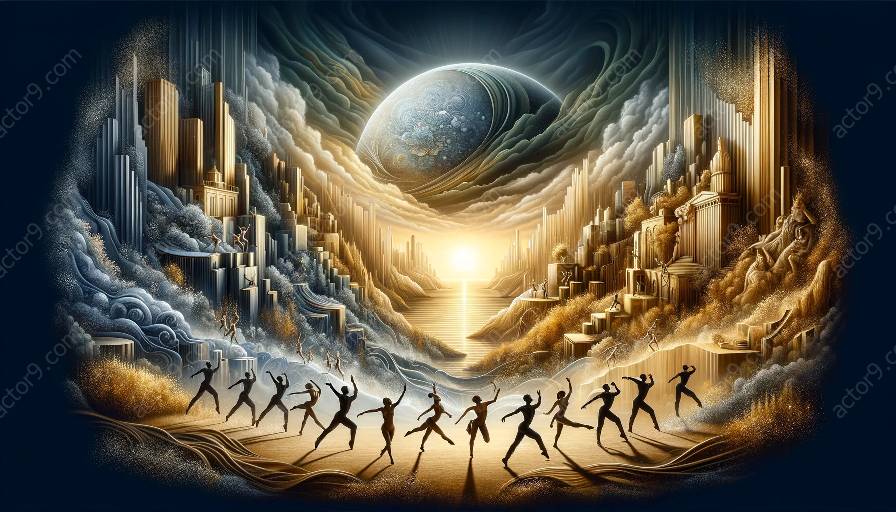Physical theatre is a unique and powerful art form that uses the body as a primary means of expression. Through movement, gesture, and physicality, it brings stories, emotions, and ideas to life. One fascinating aspect of physical theatre is its interpretation of historical social movements, capturing the essence of past struggles, triumphs, and societal shifts. This topic cluster aims to explore the intersection of physical theatre and historical social movements, delving into how physical theatre portrays social issues and engages with history in an impactful and authentic way.
Understanding Physical Theatre
Before delving into the interpretation of historical social movements, it's important to understand the essence of physical theatre. Unlike traditional forms of theatre that heavily rely on dialogue and set designs, physical theatre emphasizes the use of the body as a key storytelling tool. Performers use movement and non-verbal expressions to convey narratives, emotions, and themes, often without relying on spoken words. This visual and kinetic form of storytelling allows for a deeper, more visceral connection with the audience, transcending linguistic barriers and cultural differences.
Interpretation of Historical Social Movements
Physical theatre provides a unique lens through which to interpret historical social movements. By embodying the struggles, aspirations, and dynamics of past societal changes, physical theatre offers a visceral and emotional portrayal of history. Performers use their bodies to recreate the essence of pivotal moments in social movements, from civil rights marches to labor movements and feminist protests. Through choreographed movements, symbolic gestures, and evocative physicality, physical theatre brings the past to life, allowing audiences to experience the intensity and impact of historical events in a deeply personal and immediate manner.
Portrayal of Social Issues in Physical Theatre
One of the strengths of physical theatre is its ability to portray complex social issues in a compelling and thought-provoking manner. Issues such as inequality, injustice, discrimination, and resistance are brought to the forefront through the raw physicality and emotive expressions of the performers. Physical theatre transcends the limitations of spoken language, allowing for a more universal and inclusive representation of social issues. Through captivating movement sequences, gestural narratives, and dynamic interactions, physical theatre effectively sheds light on the multifaceted layers of social struggles, inviting audiences to engage with challenging and often evocative themes.
Impact and Authenticity
Physical theatre's interpretation of historical social movements holds the power to leave a profound impact on audiences. By embodying the essence of historical events through physical storytelling, it fosters a sense of empathy, understanding, and connection with the past. The authenticity and emotional resonance of physical theatre performances serve to humanize historical narratives, making them more relatable and relevant to contemporary audiences. This form of artistic expression transcends mere retelling of history; it becomes a dynamic and immersive experience that sparks conversations, reflections, and a deeper appreciation for the complexities of social movements.
Conclusion
Physical theatre's interpretation of historical social movements not only offers a captivating artistic experience but also serves as a powerful vehicle for engaging with history and social issues. Through its unique blend of movement, emotion, and storytelling, physical theatre brings to life the struggles and triumphs of past societies, offering a compelling and authentic lens through which to interpret and understand historical social movements.




































